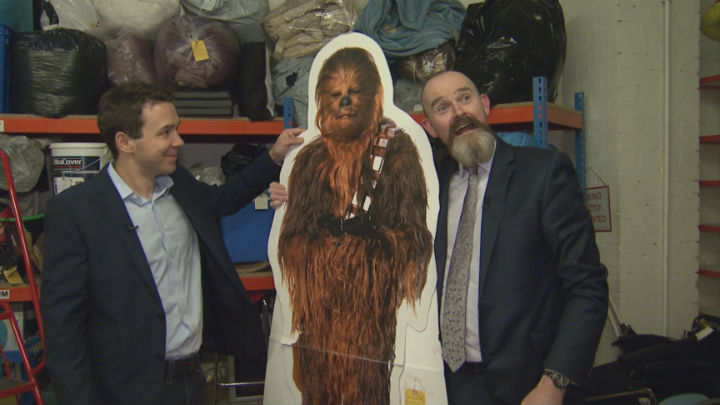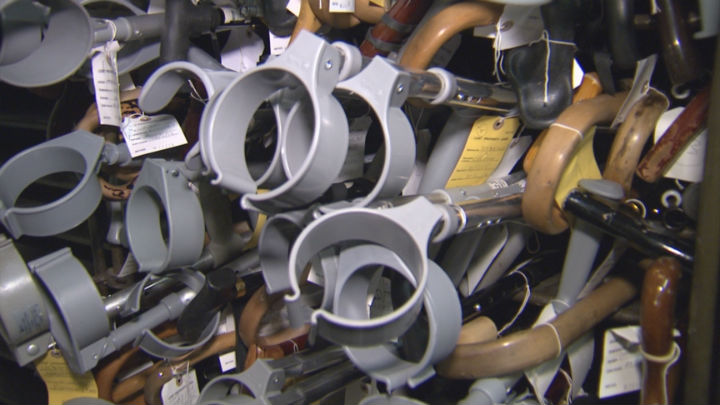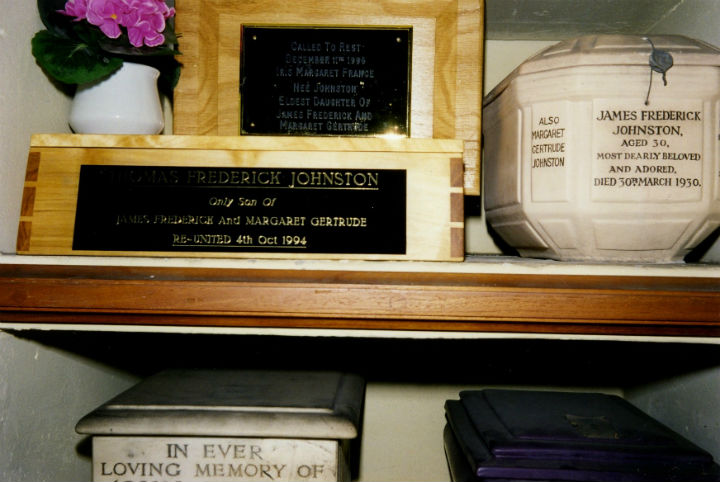LONDON, England — Rush hour in London can feel like a contact sport, with up to four million passengers squeezing onto the Tube, London’s underground transit network, every day. They’re carrying purses, phones and other valuables — many of which inevitably end up in Paul Cowan’s office.

“It’s just fascinating, from day to day, to see what comes through,” Cowan told Global News. He’s the manager of the Transport for London’s Lost and Found. His office is multi-storey labyrinth of shelves and bins, packed with every item imaginable.
Last year, they received a record 309,000 lost belongings.
“The volumes are staggering,” he said. “Every day, we see 300 items of clothing, 150 bags, 130 mobile phones, books, baby buggies, cameras. High value stuff and low value stuff.”
Then, there’s the strange stuff: a life-sized cardboard cutout of Chewbacca, a judge’s wig and enough instruments to fill an orchestra. And there’s a lot of limbs, too.
“Over the years, we’ve had some prosthetic arms, legs, false eyes, false teeth — not necessarily all from the same person,” Cowan joked.

Get daily National news
“You raise your eyebrow and think, ‘Did somebody get onto the tube with a crutch and get off without it? Is there some kind of miraculous healing power in the London transport network?’ It’s the story behind it which is fascinating.”
The lost items can also tell a much larger story about the evolution of our society.
The London Underground is older than Canada, dating back to 1863. In those days, the most commonly misplaced belongings were top hats. Today, it’s cellular phones — 23,000 of which were recovered just last year.
About 20 per cent of all lost items are successfully returned to their owners. The rest are given to charity or thrown away after three months.
“Some things you just can’t get rid of,” Cowan said. His best example is a lost urn. According to its plaque, the box contained the ashes of a Mr. Thomas Frederick Johnston. For seven years, the Lost Property office staff worked to track down the owner.
Finally, a family member from Canada received word and came to claim it.
That, Cowan said, is the best part of his job – reuniting people with their prized possessions.
“We’ve had people break into tears, break into song,” he said. “We had one man who got his accordion back, who then did an impromptu song and dance and played us a song.”
Cowan filmed another happy customer who successful retrieved his keys and then burst into a spontaneous and improvised song.
Every item tells a story, he said, but the best stories have happy endings.










Comments